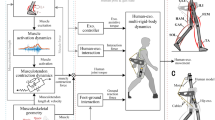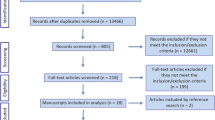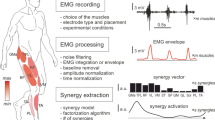Abstract.
The question of how multijoint movement is controlled can be studied by discovering how the variance of joint trajectories is structured in relation to important task-related variables. In a previous study of the sit-to-stand task, for instance, variations of body segment postures that leave the position of the body's center of mass (CM) unchanged were significantly greater than variations of body segment posture that varied the CM position. The present experiments tested the hypothesis that such structuring of joint configuration variability is accentuated when the mechanical or perceptual task demands are made more challenging. Six subjects performed the sit-to-stand task without vision (eyes closed), either on a normal or on a narrow support surface. An additional constraint on the postural task was introduced in a third condition by requiring subjects to maintain light touch (less than 1 N) with the fingertips while coming to a standing position on the narrow base of support. The joint configurations observed at each point in normalized time were analyzed with respect to trial-to-trial variability. The task variables CM and head position were used to define goal-equivalent sets of joint configurations ("uncontrolled manifolds," UCMs) within which variation of joint configuration leaves the task variables unchanged. The variability of joint configurations across trials was decomposed into components that did not affect (within the UCM) and that did affect (orthogonal to the UCM) the values of these task variables. Our results replicate the earlier finding of much larger variability in directions of joint space that leave the CM unchanged compared with directions that affect CM position. This effect was even more pronounced here than in the previous experiment, probably because of the more difficult perceptual conditions in the current study (eyes closed). When the mechanical difficulty of the task was increased, the difference between the two types of joint variability was further accentuated, primarily through increase in goal-equivalent variance. This provides evidence for the hypothesis that under challenging task constraints increased variability is selectively directed into task-irrelevant degrees of freedom. Because differential control along different directions of joint space requires coordination among joint angles, this observation supports the view that the CNS responds to increased task difficulty through enhanced coordination among degrees of freedom. The adaptive nature of this coordination is further illustrated by the similar enhanced use of goal-equivalent joint combinations to achieve a stable CM position when subjects stood up under the additional constraint of maintaining light touch with the fingertips. This was achieved by channeling goal-equivalent variability into different directions of joint configuration space.
Similar content being viewed by others
Author information
Authors and Affiliations
Additional information
Electronic Publication
Rights and permissions
About this article
Cite this article
Scholz, J.P., Reisman, D. & Schöner, G. Effects of varying task constraints on solutions to joint coordination in a sit-to-stand task. Exp Brain Res 141, 485–500 (2001). https://doi.org/10.1007/s002210100878
Received:
Accepted:
Issue Date:
DOI: https://doi.org/10.1007/s002210100878




